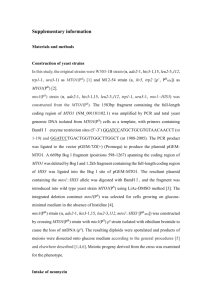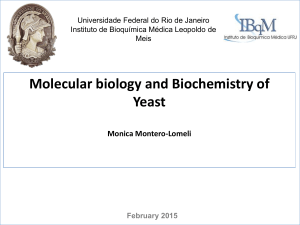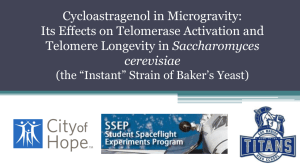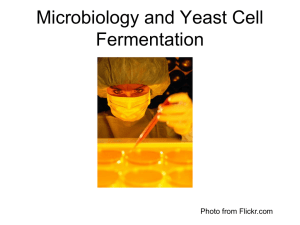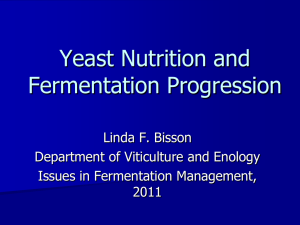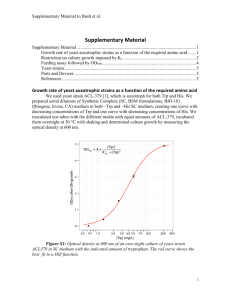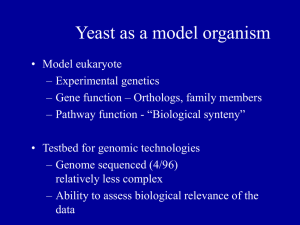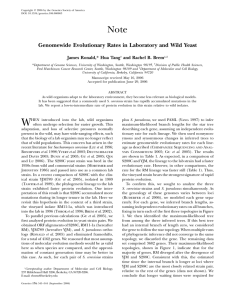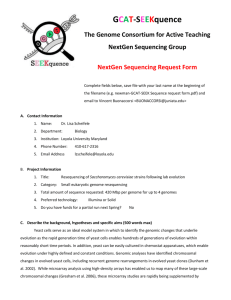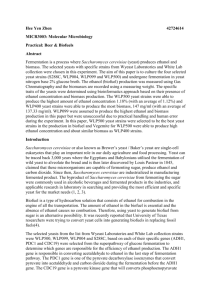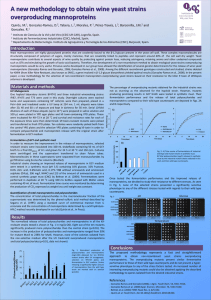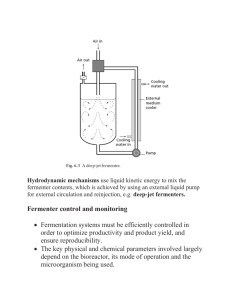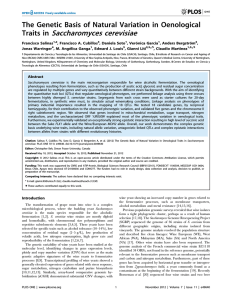The Diversity of Wine Yeast
advertisement
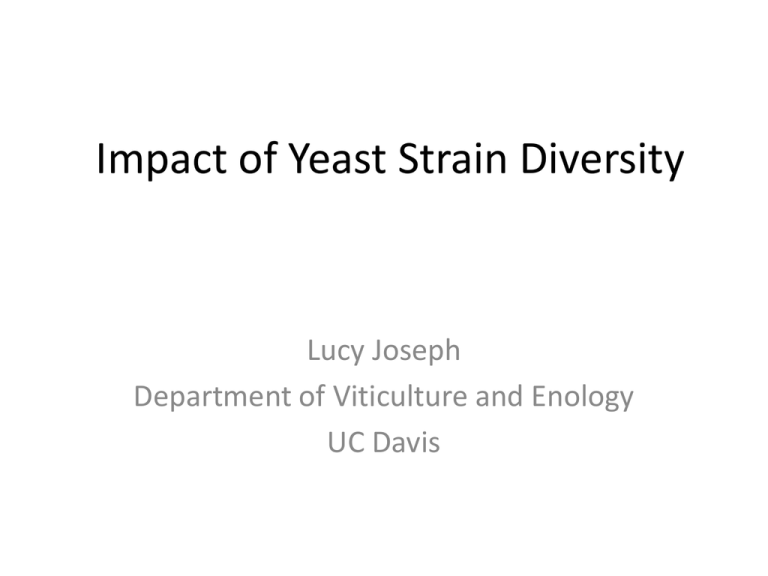
Impact of Yeast Strain Diversity Lucy Joseph Department of Viticulture and Enology UC Davis Outline of Yeast Diversity • • • • • Overview of biological strain diversity Commercial yeast strains Choosing a yeast strain Native yeast strains Interaction with other yeast and fungi and bacteria What is a Strain? • • • • • Strains are the same species of organism They have measureable differences These differences are consistent and inherited Strains are often a clonal population (budding) Differences may be genetic or due to the expression of genetic material How do Differences Arise? • Genetic change on the chromosome either by sequence or position • Genetic difference in organelle DNA, example: mitochondrial or ribosomal DNA • Genetic mutation in or loss or gain of extrachromosomal DNA • Extra copies of chromosomes, anueploid/polyploid • Hybrids between Saccharomyces species • Inherited transcriptional state, i.e. epigenetic • Inherited protein conformational state i.e. prion Selection for Differences Natural variation occurs Unfavorable variants selected against New Strain Favorable variants more likely to survive and reproduce Domesticated vs. Wild Saccharomyces cerevisiae • Wild Saccharomyces are found in the vineyard and in oak trees and soil near vineyards • Domesticated Saccharomyces are found in the winery and for sale from inoculant companies • Domesticated yeast are typically better suited for making wine • They are selected both naturally and purposefully to survive and thrive in the winery environment Definition of Domesticated ‘species bred in captivity and thereby modified from its wild ancestors in ways making it more useful to humans who control its reproduction and (in the case of animals) its food supply’ Diamond J (2002) Evolution, consequences and future of plant and animal domestication Nature, 418, 700–707 Wine Yeast and Other Domesticated Yeast LeGras et.al. Molecular Ecology (2007) 16:2091-2102. Characteristics Selected For in Wine • • • • • • • Acid Tolerance Temperature range Sulfite resistance – Vineyard and Winery Fermentation speed Alcohol tolerance Nitrogen requirement Competitiveness What traits do you want in a yeast? What traits do you want in a yeast? Characteristics not Selected for in Nature • Sensory properties – Low VA, SO2, H2S – Positive ester production – Enhanced mouthfeel • Those important in production – Low foam production – Flocculation – ML compatibility What traits do you want in a yeast? What traits do you want in a yeast? Choosing a Yeast Strain Consider yeast as a tool for wine making Factors to Consider: • Grape varietal • Brix and alcohol • Fermentation temperature • Additions • Production capacity • Wine making style – ML, aging, micro-ox, etc. Before Inoculation Before Inoculation Testing May Affect Your Yeast Choice… • If you might add nitrogen or use a yeast that doesn’t require high nitrogen • If other nutrients are lacking • If you should consider a yeast that tolerates high alcohol • If you are concerned about H2S or SO2 production Other factors for your considerations… Native Fermentations • Yeasts other than Saccharomyces can occur and complete fermentations • Commercial strains can persist in the winery • Native strains may have greater potential for change (instability) • Potential for strains with undesirable characteristics to dominate and persist • Multiple strain fermentations are more likely to occur Stuck Fermentation • Once a fermentation sticks it can be hard to un-stick • Some strains do better than others at this • Native fermentations should be monitored more closely Sensory Defects • These may occur more often with native fermentations • Monitor closely • Consider inoculation at first signs of trouble • The point of inoculation is to get rapid and consistent fermentations Mixed Fermentations • Pro: – Wild yeasts can add complexity to wines – More than one strain of Saccharomyces could add complexity and unique character – Diverse population may handle stress better • Con: – Competition between yeasts and strains can select for those with undesirable traits – Strains that grow well do not always produce the best wine Other Microbe Interactions • Some yeasts are not compatible with ML conversion – Possibly due to more complete utilization of nutrients leaving less for Oenococcus • High SO2 can inhibit ML • Low pH can also prevent ML Other Microbe Interactions • Specialty wines like botrytized have specific issues, botrytized wines will have far more diverse flora making fermentation more of a challenge • Sparkling and sherry wines have another yeast fermentation during the second stage of production which must be compatible with the first yeast Summary By Analogy…. Domesticated Organisms Retain Much Diversity Strains are Bred for Specific Conditions • No single strain does well under all conditions • No single strain serves all purposes Some Strains are Just More Pleasing to the Senses Wild Strains Have the Most Diversity

